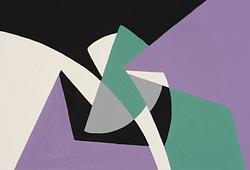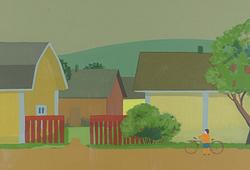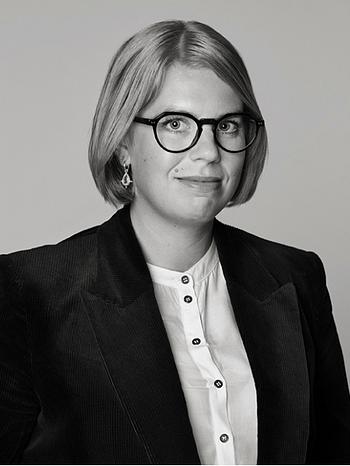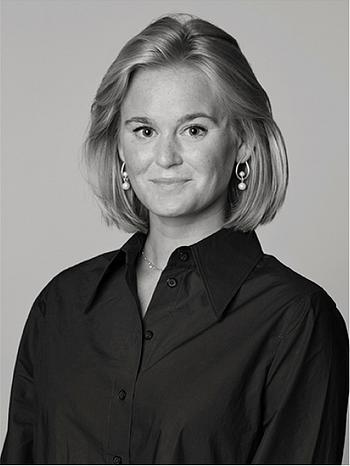Modern Art & Design Presents Lynn Chadwick
Bukowskis presents the work "Maquette II Jubilee III" by Lynn Chadwick at this autumn's live auction, Modern Art & Design – The leading live auction for modern art and design in the Nordics.
Lynn Chadwick’s characteristic figures are instantly recognisable. They possess a voice entirely their own, and their distinctive formal language resembles no one else’s. Majestic strangers—enigmatic, scarcely at rest, rather watchful. With their geometrically simplified shapes and sharply draped cloaks, they evoke both associations and fascination.
Chadwick made his debut on the British art scene shortly after the Second World War, alongside a new generation of artists. Europe lay in ruins; the world was in shock after witnessing the horrors of war, genocide, and the effects of the atomic bomb. Chadwick himself served as a pilot in the RAF during the war. Even as a young man, he had longed to devote his life to art, but his parents’ disapproval led him to compromise and train as an architect instead. Before the war, he worked as a draughtsman in an architectural office. Lacking any formal artistic training, Chadwick perhaps reveals in his work the disciplined geometry of architectural drawing. After the war, he was filled with a yearning to create—to bring something new into being.

It took some time, however, before he dared to take the full step into becoming an artist. For several years, he worked successfully as a designer and interior architect. During the late 1940s, Chadwick supported himself by designing display stands, furniture, and wallpaper patterns, all the while developing his art.
It was through the Venice Biennales of 1952 and 1956 that Chadwick achieved his international breakthrough, and he has since been regarded as one of the most significant figures in post-war British art. The expression in Lynn Chadwick’s sculpture is closely linked to his working methods. Largely self-taught, he invented his own technique. His process has been described as three-dimensional drawing with metal rods: Chadwick would first bend and shape the rods into the desired form, then weld them together. He would then fill in the areas intended to be solid. For certain sculptures, he used metal sheets that gave the impression of a “metal skin”. It was not until the late 1950s that he began casting in bronze. Chadwick placed great emphasis on the patination of his sculptures, working carefully with the texture of the surface and the nuances of colour.

The triangle, in various forms, is the fundamental geometric element in Chadwick’s art—sometimes combined into rectangles. Positioned vertically or diagonally, but rarely horizontally, this form provides the structural framework of his sculptures and creates a sense of formal tension. The artist himself believed the triangle to be the simplest sketch of a human or animal figure, from which the body could then be developed. He always emphasised that his work took the human form as its starting point.
The present sculpture, Maquette II Jubilee III, dates from the artist’s 1980s production, recognisable for its iconic and mature expression, in which the forms have been refined and pared down. As viewers, we encounter two archetypal and timeless shapes, and it is difficult to tell whether Chadwick drew his inspiration from Neolithic civilisation or from Jung’s theory of archetypes and the collective unconscious.
The figures that populate the artist’s imaginative world are hybrids, borrowing features from humans, birds, reptiles, and insects—creatures with which we partly identify, yet also fear. In this group, it is primarily the faces that define the figures: the square symbolises the male, and the triangle the female—a motif recurrent throughout his oeuvre.
Chadwick himself described art as a dark inner force that manifested itself to the artist and was translated through his skill and ability. What we, the viewers, receive through that translation is ours to interpret freely.
To the catalogue
The work will be sold at Modern Art & Design
Estimate 1 500 000 - 2 000 000 SEK
Catalogue online November 4
Viewing November 12–17, Berzelii Park 1, Stockholm
Live auction November 18–19, Arsenalsgatan 2, Stockholm
Read more about Modern Art & Design
All works by Lynn Chadwick at Modern Art & Design

Hammer price
1 550 000 SEK
Estimate
1 500 000 - 2 000 000 SEK
Requests & condition reports
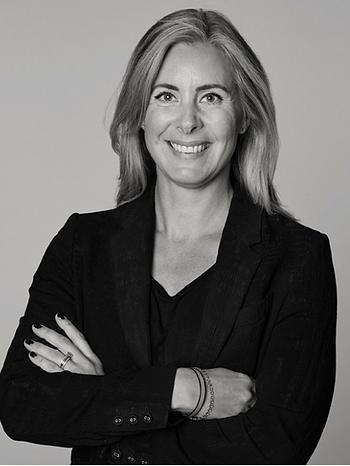
Stockholm
Louise Wrede
Head of Art Department, Specialist Contemporary Art, Private Sales
+46 (0)739 40 08 19




